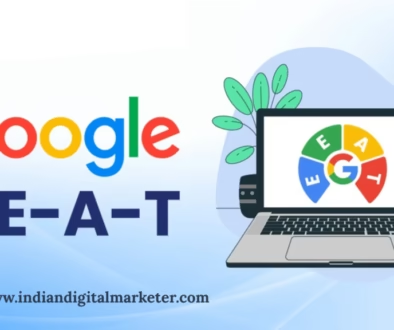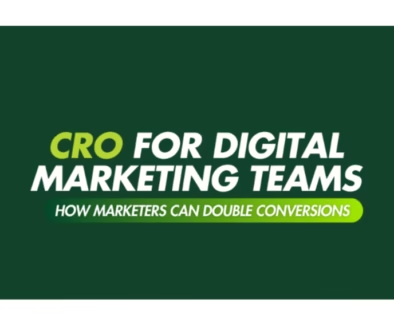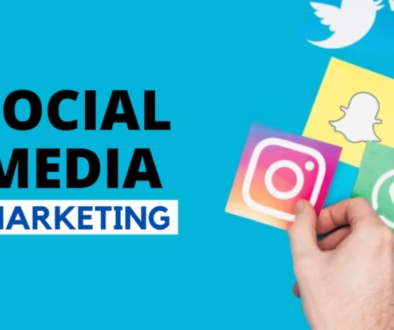Inbound Marketing Strategies for Success | Expert Tips & Best Practices
In today’s digital age, traditional marketing methods are becoming less effective. As consumers become more empowered and selective, businesses need to find innovative ways to capture their attention and drive conversions. One such approach is inbound marketing. In this blog, we will explore the concept of inbound marketing, its benefits, and how businesses can leverage its power to grow their brand.
What is Inbound Marketing?

-
Definition and Overview –
Inbound marketing is a marketing methodology that is focused on attracting customers by creating valuable content and experiences tailored to their needs and interests. Inbound marketing focuses on creating relationships with customers, rather than on pushing a sales message. It is a customer-centric approach that is designed to engage customers and inspire them to take meaningful action.
-
How Inbound Differs from Outbound Marketing –
Outbound marketing focuses on pushing a sales message, while inbound marketing focuses on creating relationships with customers. Inbound marketing focuses on creating valuable content and engaging with customers, rather than on pushing a sales pitch.
-
The Inbound Methodology –
Inbound Marketing focuses on creating useful content that prospects and customers will find useful, and on engaging with them by providing support, answering questions, and offering advice. Inbound marketing also involves using analytics to measure the success of content and gain insights into customer behavior.
The Benefits of Inbound Marketing

-
Cost-Effectiveness –
Inbound marketing is less expensive than traditional marketing methods, such as print ads and television commercials, because it does not rely on mass advertising to reach its target audience. Instead, it uses content that is tailored to a specific audience and is spread through online channels, such as social media, blogs, and search engines.
-
Long-Term Results –
This approach helps to build long-term relationships with customers, since it’s targeted and relevant to them. It also provides the opportunity to track customer behavior, which can help you to optimize your campaigns and tailor your content accordingly.
-
Personalized and Targeted Approach –
A personalized and targeted approach involves creating and delivering content that is tailored to a specific customer segment. This approach allows you to better target the right customers with the right message, which can help to build stronger relationships and increase customer loyalty. Additionally, it allows you to track customer behavior so that you can optimize your campaigns and ensure that you’re delivering content that is most relevant to them.
-
Building Trust and Credibility –
By tracking customer behavior, you understand what they are looking for and what they are responding to. This can help you create targeted campaigns that are more likely to be successful, as you will know exactly what content to create. Additionally, tracking customer behavior can help you build credibility and trust with your customers, as they can see that you are delivering content that is tailored to their needs and interests.
Key Components of a Successful Inbound Marketing Strategy

-
Content Creation and Marketing
- Creating Engaging Content
Creating Engaging Content involves creating content that is interesting, informative, and engaging to readers. This content should be tailored to the target audience and should be thoughtfully crafted to effectively reach and resonate with the intended audience.
- Utilizing Different Content Formats (Blogs, Videos, Infographics, etc.)
Utilizing Different Content Formats (Blogs, Videos, Infographics, etc.) allows for content to be presented in a variety of ways. This can make content more engaging and interesting, as well as make it more accessible to different types of audiences. Additionally, using multiple formats can help to ensure more people will be exposed to the content.
- Optimizing Content for Search Engines (SEO)
(SEO) involves creating content that is optimized for search engine algorithms, which can help to increase the visibility of the content in search engine results. This includes using relevant keywords, optimizing page titles and meta descriptions, and creating content that is easy to read and navigate.
-
Social Media Marketing
- Leveraging Social Platforms for Brand Awareness
Leveraging Social Platforms for Brand Awareness involves using social media platforms, such as Facebook, Twitter, Instagram, and YouTube, to promote your brand and reach out to potential customers. This involves creating content that is interesting and engaging, and that encourages people to engage with and share your brand. It also involves creating strategic partnerships with influencers and leveraging their reach to expand your brand’s visibility.
- Engaging with the Target Audience –
This involves creating content that resonates with your target audience, listens to their feedback, and responds quickly and effectively to their inquiries. It also involves actively engaging with the audience on social media and creating campaigns that are tailored to their interests.
-
Email Marketing
- Building a Subscriber List
Building an email subscriber list is the foundation of any successful email marketing campaign. A subscriber list allows you to easily contact potential customers and build relationships with them. It also helps to ensure that your emails are delivered to the person’s inbox and not to their spam folder.
- Creating Effective Email Campaigns
Creating Effective Email Campaigns involves crafting emails that are tailored to your target audience, personalizing the content, and optimizing the timing and frequency of your emails. It also includes ensuring that your emails adhere to the spam laws and guidelines set by email providers.
- On-Page and Off-Page SEO Techniques
On-Page SEO Techniques involve optimizing the content and structure of a website in order to increase its visibility and ranking in search engine results. Off-Page SEO Techniques involve optimizing external factors like link building and social media marketing to help a website rank higher in search engine results.
- Keyword Research and Optimization
Keyword Research and Optimization involves researching and identifying the most relevant keywords for a website and optimizing the website content to include those keywords. This helps search engines to better understand what the website is about and how to rank it in search engine results.
-
Conversion Rate Optimization (CRO)
- Understanding the Customer Journey
Conversion rate optimization (CRO) involves understanding how customers interact with a website and how to optimize that experience to increase conversions. This includes understanding the customer journey, from the first visit to the site to the final purchase. By understanding the customer journey, businesses can identify potential drop-off points and make necessary changes to improve the customer experience.
- Implementing Effective Call-to-Actions (CTAs)
CTAs are an essential part of any website, as they help to guide customers towards completing the desired action. By implementing effective CTAs, businesses can drive more customers to complete their purchases, leading to increased sales and revenue.
- A/B Testing and Optimization
A/B testing and optimization allows businesses to track the performance of their CTAs, enabling them to determine which CTAs are the most effective and which ones need improvement. By tracking the performance of their CTAs, businesses can make informed decisions about which CTAs are the best to use on their websites and optimize them for optimal performance.
Inbound Marketing Best Practices and Case Studies

-
Creating Buyer Personas
Buyer personas are a powerful tool for marketers to identify who their target audience is and how to best reach them. They allow you to understand the interests of your audience, how they make decisions, and what stage of the buying process they are in. This information can be used to create content that is tailored to your audience and to increase the effectiveness of your marketing campaigns.
-
Mapping the Buyer’s Journey
A buyer’s journey is the path that customers take from becoming aware of your brand to making a purchase decision. By mapping out this journey, you can better understand which content to create, when to create it, and how to target your audience. This will also give you insight into how to optimize your campaigns to ensure that they are successful.
-
Implementing Marketing Automation Tools
Marketing Automation Tools can help you to streamline your marketing processes, such as setting up email automation campaigns and tracking analytics. They can also help you to automate tasks that you previously had to do manually, freeing up your time to focus on more important activities
-
Analyzing and Measuring the Success of Inbound Campaigns
Analyzing and measuring the success of inbound marketing campaigns is crucial for businesses looking to optimize their digital marketing efforts. It involves a multifaceted approach, including tracking website traffic, lead generation, and conversion rates. Key performance indicators (KPIs) such as click-through rates, email open rates, and social media engagement provide valuable insights into the campaign’s effectiveness. Additionally, measuring the return on investment (ROI) by evaluating the cost per lead or customer acquisition cost helps determine the campaign’s financial impact. Through the continuous analysis of these metrics and by adapting strategies based on the data, businesses can refine their inbound marketing campaigns to achieve better results and ensure a more significant online presence and customer engagement.
Challenges and Potential Risks of Inbound Marketing

-
The Time and Effort Investment:
Inbound marketing, while cost-effective in the long run, demands a significant time and effort investment. Crafting high-quality content, optimizing it for search engines, and nurturing leads can be a resource-intensive process. It may take time before a business starts to see substantial returns, and some companies may struggle with patience and persistence, potentially discontinuing their efforts prematurely.
-
Aligning Sales and Marketing Teams:
Effective inbound marketing relies on seamless collaboration between sales and marketing teams. Ensuring that both teams share the same goals, target audience, and messaging can be a challenging task. Misalignment can lead to missed opportunities and inconsistent customer experiences, making it essential to establish clear communication channels and common objectives.
-
Staying Ahead of Constantly Evolving Trends:
The digital marketing landscape is in a constant state of flux, with algorithms, platforms, and consumer preferences continually evolving. Inbound marketers must adapt to these changes to remain effective. Staying updated with the latest SEO best practices, content marketing trends, and emerging technologies can be challenging. Failure to do so can result in a drop in search engine rankings and engagement levels, posing a risk to a company’s online presence and customer reach.
Conclusion:
Inbound marketing has revolutionized the way businesses connect with their target audience and generate leads. By focusing on creating valuable content and building meaningful relationships, companies can attract, engage, and delight customers throughout their buying journey. By implementing a well-rounded inbound marketing strategy, businesses can position themselves for long-term success in the digital landscape. Embrace the power of inbound marketing and unlock its potential for your business today.




Inbound Marketing Strategies for Success | Expe...
November 3, 2023 @ 11:01 am
[…] Boost Your Brand's Success with Inbound Marketing | Expert Strategies for Attracting, Engaging, and Converting. Discover Proven Inbound Marketing Techniques Today! […]